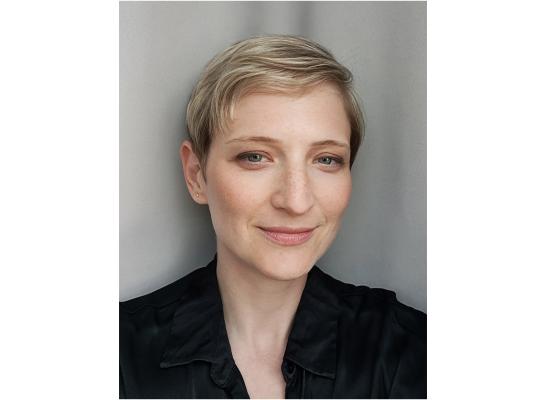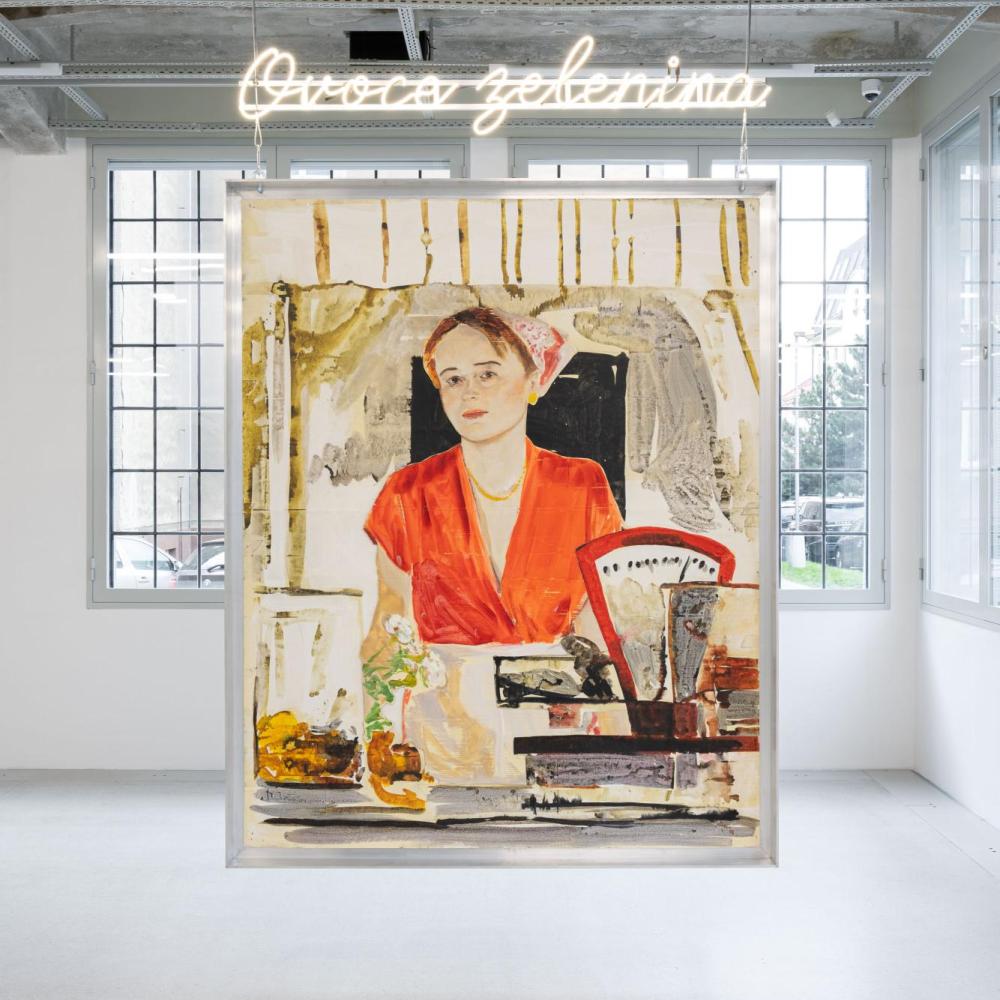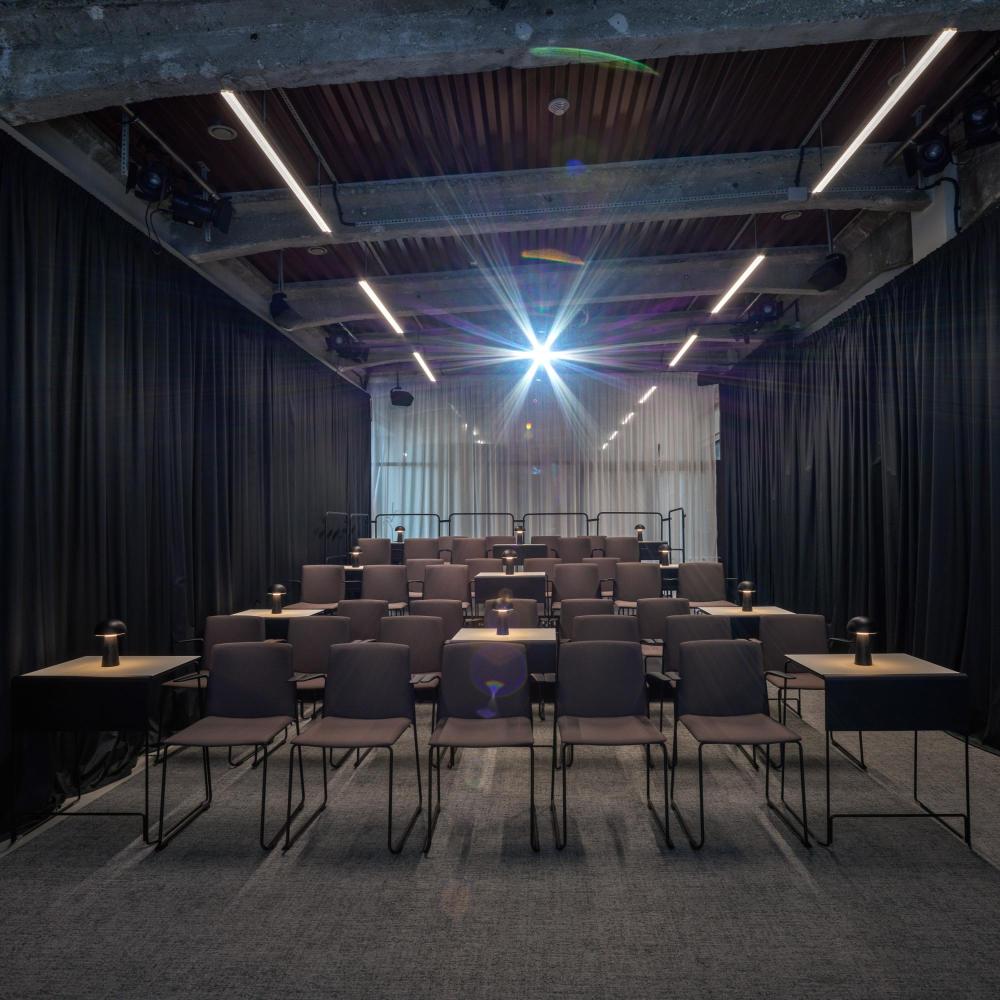
Silvia L. Cúzyová (*1981) is an art historian and independent curator. She graduated from the Faculty of Arts at the University of Trnava in Trnava with a Master's degree in History of Art and Culture, and received her PhD from the Department of Theory and History of Art at the Academy of Fine Arts in Bratislava. She also worked at the Academy of Fine Arts as the director of the Medium Gallery and was a researcher at the Research Centre of the Academy of Fine Arts. Currently, she lectures at the University of Trnava, reviews, publishes, and collaborates on solo exhibitions in Slovakia and abroad. She specializes in the history and theory of modern and contemporary visual art, the history and present of art criticism. She is a member of the Slovak section of AICA (International Association of Art Critics).
As a curator, you work with established artists of the older and middle generation. From the long list of exhibitions, I would mention, for example, Anna Daučíková's exhibition at the Médium Gallery in 2018 and Monika Immrová's exhibition at the Gallery of the City of Pilsen in 2022. At the same time, you also collaborate with young artists - one of the exhibitions this year, for example, was Stanislav Ondrus' exhibition at DOT. Contemporary Art Gallery. What does the cooperation with members of different generations bring you? Do you see a difference in approaches to creation or in the art scene?
Thank you for reminding me of a number of interesting collaborations, some of which I particularly value and many of which have enriched me personally and professionally. I don't see my collaborations as somehow deliberately generational. As is the way of the world, not only in the art world, there are also many happy coincidences. Since I am a "freelance" curator, so to speak, I try to take only what really interests me. Although I don't have it strictly thematically or technologically defined, I stay within the realm of visual art and this certain divergence composes the bigger picture of what's going on, within my areas of interest. Of course, I would add Michal Škoda, or painters Laco Teren, Adam Szentpétery, Hana Garova, from the field of design Petr Hůza or Markéta Nováková to the important curatorial collaborations. I think that for a long time I have also had one foot in photography, or often in "border forms of photography" as I call it, here I had a formative collaboration with the aforementioned Anča Daučíková or Robert V. Novák. In the last year I had the opportunity and enjoyed very much the collaboration with older photographic material (Miloš Dohnány, Tibor Borský, currently Tibor Huszár). The young painter Stano Ondruš was basically an exception, because he approached me himself, something that doesn't happen too often in the young generation, but I liked what I saw in his studio and so we tried our collaboration. With every artist and artist, collaboration is completely different, you have to be open to a particular model and possibilities. And with the ones I enjoy and have fun with, and it's possible, I like to collaborate repeatedly, because with these long-standing creations and complex artistic approaches, it's always possible to explore more and get into deeper layers and broader contexts. It's a particularly adventurous and exciting exploration for me.
In your role as a curator, you are not only based in Slovakia, but also abroad. What is the state of the art scene in Slovakia in particular? Do you see any differences between it and the one in the Czech Republic?
In the Czech Republic the art scene is more developed and richer, I see a lot more possibilities, interest and initiatives. Here in Slovakia, especially after two seasons of covid and the subsequent inflation, there is, with individual exceptions, a general decline, as if everyone has run out of breath. Institutions are cutting back and catching up on postponed programming, private galleries are disappearing rather than growing, there is basically nowhere to exhibit or publish. Curatorial work (unless you are part of an institution) is still largely seen here as a leisure activity that you have to pay for entirely out of your other resources, rather than some private hobby.
Many young people from Slovakia study at art schools in the Czech Republic, so collaborations and merging of the two scenes often arise. Do you see this connection as important?
The linguistic and partly cultural connection between our two nations is a huge advantage. With a birth year of 1981 and Czech-Slovak origins, I see myself as a regular child of Czechoslovakia. The Czecho-Slovak scene and events have been historically interconnected for the last century and I think that interconnectedness is still relevant, although perhaps a little differently today than in the past - nowadays more voluntarily and naturally. I am glad of that, even though we have cultural and historical differences, I see the Czech Republic and Slovakia as symbiotically linked.
From 2009-2017 you were the director of the Medium Gallery at the Academy of Fine Arts in Bratislava. The activities of the gallery continue today. How do you view the activity of small galleries, also in the context of the fact that you have successfully led one of them for eight years? What was the concept of the Medium Gallery during this period?
I see my years at Gallery Medium in retrospect as very useful and intense "comradeship years", that time when you finish school and urgently need to gain experience. I also recommend to my students, if they are interested, to get directly involved in a gallery practice, which is definitely the best school of life. During my directorship, the exhibition programme at the Medium Gallery was decided by a large gallery board composed of teachers from the VŠVU. Preference was given mainly to exhibition projects that reflected the activities of the studios and departments of the VŠVU. It was not possible to interfere too much with this, so I opened the programme rather through other types of non-exhibition activities, which on the one hand were meant to attract viewers to the gallery repeatedly, not just once. I also tried to reach out to various other target and interest groups, other than the "ordinary" person interested in art, or the art student. So we did interdisciplinary conferences - calling political scientists, philosophers, literary scholars, geographers, archaeologists, cavers, and of course art historians and artists, and thinking in a big cultural and social mix of information about the contemporary world, that was probably what I enjoyed the most.
I can't comment globally on the work of small galleries, or even small galleries in this country. In a closer look one can perceive their specifics - different goals, strategies, and also changing needs, themes, preferences over time. What I would say is true in general for larger galleries, and also for Gallery Medium, is that a natural succession of generations, or at least an intensive intergenerational cooperation, is very useful.
You work as an assistant professor at the Department of Art Pedagogy at the Faculty of Education, University of Trnava, with a teaching focus on art history from prehistory to the second half of the 20th century. What is essential for you in the education of the next generation of theoreticians, educators and artists?
Yes, I currently teach art history from prehistory to the present, analysis, interpretation, critical writing... Teaching is basically a great thing, one learns an awful lot on one's own, in fact, everything one has blown off or ignored during one's own studies. But I think there is a difference certainly in the education of art theorists, gallery educators, and future artists. And what is fundamental in that? Um, maintaining a passion for the cause and, most importantly, probably having something to say.
Are you into collecting as well? If so, what works, media, or periods do you focus on?
I have some donated works that I enjoy as my heartthrobs, but no, I do not purposely collect art, design or photography.
You are the curator of the exhibition Topographies of Solitude. However, this is not your first collaboration with Michal Škoda. How did your long-standing collaboration come about?
Michal Škoda, in addition to his work as an author, works as a curator at the House of Art in České Budejovice. Nowadays it is quite common to see artists themselves in the position of curator. How do you perceive the boundaries between the theoretical and the artistic?
I first met Michal Škoda at the House of Arts in České Budějovice (DUČB) in 2018, when I participated in an exhibition project by graphic designer Robert V. Novák, entitled "Leave this place". Robert's exhibition had its premiere at the Medium Gallery in Bratislava and then a reprise at DUČB, but at that time I had no idea what a prestigious gallery I had just entered "like a blind chicken". Michal Škoda and I had a classic opening talk, he was interested in an exhibition in Slovakia, which I immediately started working on. I purposely mapped out all exhibition possibilities (institutional, private, Bratislava and regional), and also tried to get to know and somehow interpret his artistic work in a relevant way. In the end, it took several years before the exhibition was realized here, but in the meantime we have successfully realized several exhibition projects in the Czech Republic. The collaboration with Michal has been challenging and great, and I hope it will continue. And it is also in Škoda's long-standing curatorial-managerial work that I see an important example that it is impossible to set any defensible boundaries for curatorial work, except for the requirement of quality, concept and vision. And if someone does it well, we can then look back on specific material to examine how or why this is so.
What can visitors see in the Topographies of Solitude exhibition? What clues can you give them about reading the exhibition?
I have had the opportunity to reflect intensely on the collection on display, and on Michal Škoda's work in general, and the result is the text available for the exhibition and in its entirety in the exhibition catalogue. It is not easy to talk about it explicitly in any way, so I offer no clues. But I encourage anyone for whom these works work and speak to him/her to spend more time with them and explore this intuitive or intellectual connection. That, in my opinion, is the best way to successfully "get into the secrets" of art. Any... and partly into the secrets of the self.
Finally, I'd like to ask you about the projects you have coming up in the near future. What would you like to invite visitors to?
This year, I am still very much looking forward to the exhibition with the painter Hana Gar, which we will have from November onwards just in the DUČB. It's actually the very first exhibition I'm curating there independently - it's an important milestone for me - a great gallery and a great artist. Hannah's work has an incredible intensity for me and she herself may be subtle on the outside, but beneath that surface is an extremely insightful and intellectually grounded artistic personality. So Hana Garová and Dům umění České Budějovice in autumn, don't miss out! :)







